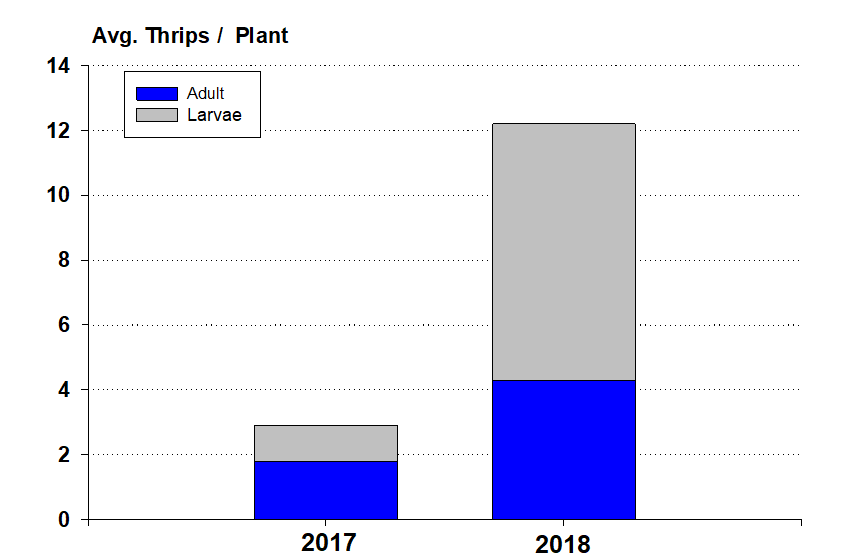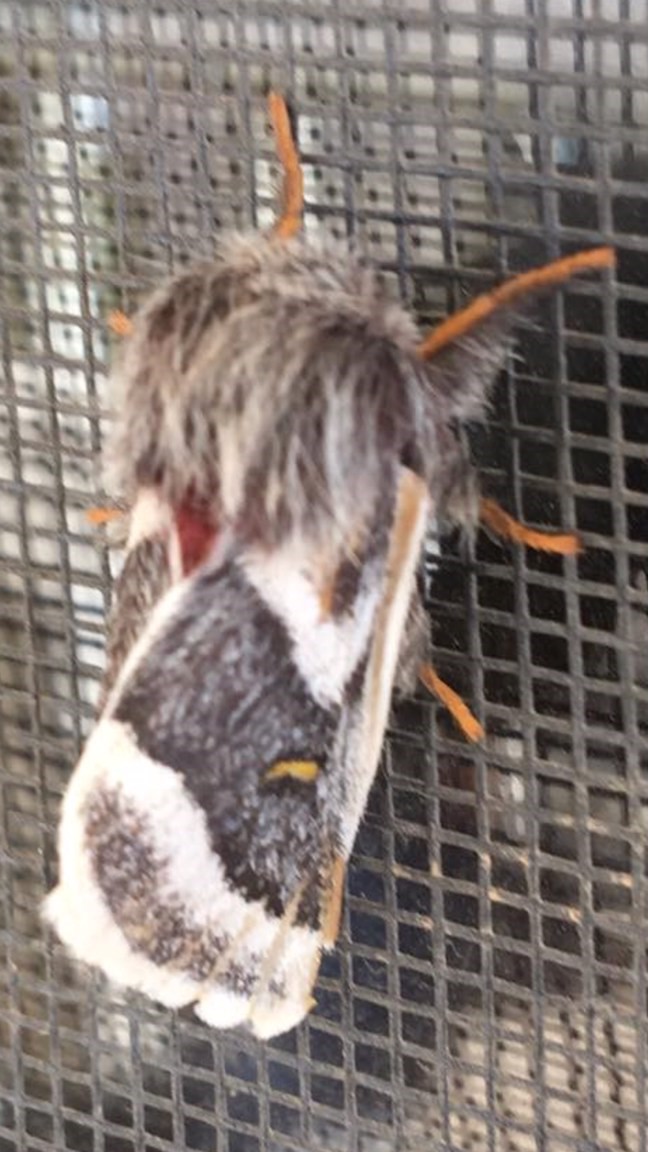
|
|
|
|

|
|||
|
|
|||
With the above normal temperatures we’ve been experiencing for the past several weeks, it’s no wonder that western flower thrips numbers in the Yuma Valley are almost 4X times higher than this time last year (see graph below). Given these ideal temperatures, you can expect thrips numbers to continue to increase, and based on historical data, if temperatures remain moderate and rainfall is light we can expect thrips numbers to reach very high levels by the end of the month. Another factor PCAs should be concerned with this time of the year is thrips "bioconcentration" which annually occurs in late February and March as lettuce acreage declines. Each time a lettuce field is harvested and disked, adult thrips disperse from these areas into the next available lettuce field. This is generally coincident with our seasonally warm temperatures that are suitable for thrips development. As the number of lettuce acres becomes reduced near the end of the season, this creates a bottleneck effect that concentrates high numbers of thrips adults on the remaining fields under production. This can often make chemical control very difficult, particularly in March, as thrips adults may continually re-infest fields following spray applications (similar to battling whitefly adults on fall melons). When lettuce production is finished, these populations can pose a threat to seedling cotton, and even alfalfa. Note: the key to preventing thrips from significantly scarring leafy vegetable plants is to prevent immature populations from becoming established. The cryptic or thigmotactic behavior of thrips often makes them difficult to find on lettuce plants. Research has shown us that if you can see a few adults and larvae on the plant, it likely means that as many as 8-10 fold more thrips are actually on the plant (hiding near the base of the plant between midribs). This behavior also means that spray coverage is important, particularly with contact insecticides like Lannate, Torac and pyrethroids. For more information on the identification, biology, ecology and management of thrips on desert produce please visit Western Flower Thrips Management on Desert Produce. | |||
| Back | |||
|
For questions or comments on any of the topics please contact Marco Pena at the Yuma Agricultural Center.
|
|||
|
Home |
Cotton | Veggies |
Forages | Grains
| Citrus |
Crop x Crop Insects | Diseases| Weeds | Pesticides | Economics | News | Weather | Research | Photos | Contacts | General Info. Copyright © 2001 University of Arizona, College of Agriculture and Life Sciences Webmaster: Al Fournier (acis@ag.arizona.edu) |
|||


